What is Meal Prep?
You probably already know what meal prepping is—or at least, you’ve seen the neatly stacked containers on social media, promising an organised, stress-free life.
At its core, meal prepping is the practice of planning, preparing, and storing meals (or ingredients) in advance to make eating well more convenient. It’s a simple yet effective way to save time, cut costs, and ensure you always have a nutritious meal ready to go.
Meal prepping is especially beneficial for:
- Busy professionals who don’t have time to cook from scratch every day.
- Families looking to simplify mealtime and reduce kitchen chaos.
- Fitness enthusiasts following specific meal plans for their goals.
- Budget-conscious individuals aiming to avoid last-minute takeout splurges.
Whether you’re prepping a few ingredients to speed up weeknight cooking or planning an entire week’s worth of meals, meal prep is a strategy that works for just about anyone looking to eat better with less effort.
If you’ve ever wondered why so many people swear by meal prepping, Beth Moncel, founder of popular cooking blog Budget Bytes, sums it up perfectly:
“I started meal prepping about 10 years ago, before I knew there was a name for it. It saves me time, energy, and money; reduces my food waste; encourages me to eat healthier foods (if they’re already prepped, I’ll eat them!); and helps prevent me from overeating, which can easily blow my food budget.
When I can see the meals right in front of me in my refrigerator, I feel responsible for eating those first instead of buying something new. (Plus, I can see at a glance how many days’ worth of food I have left, so I know when to shop and when to cook again.)
And thanks to my stockpile in my freezer, I’m never left with an empty fridge. Meal prepping might not work for everyone, but for me, it solves several issues at once.”
When did meal prepping become popular?
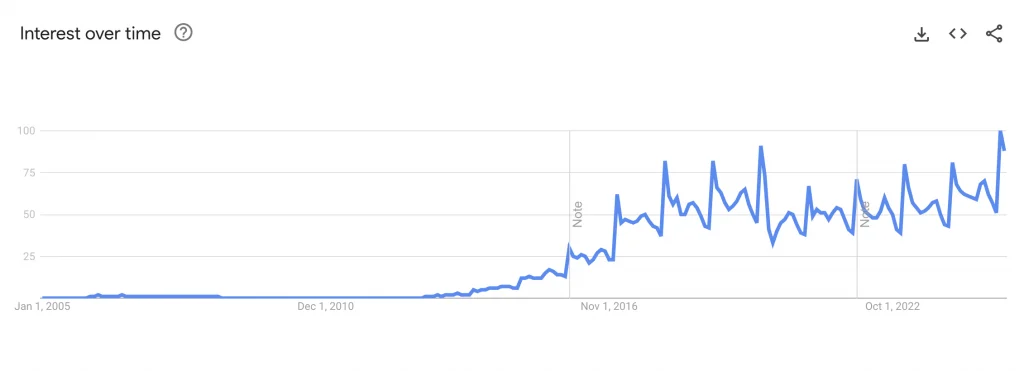
Meal prepping isn’t exactly new—home cooks and restaurant chefs have been prepping ingredients ahead of time for centuries.
But it really took off in the mid 2010s, fueled by the rise of fitness culture, diet trends like keto and paleo, and the explosion of social media content. Suddenly, Instagram feeds were filled with perfectly portioned containers, and YouTube was packed with meal prep tutorials promising to save time and money.
Why is meal prepping still so popular?

Meal prepping isn’t just a passing trend—it’s sticking around, and for good reason. In fact, more people are jumping on board because:
- Cost of living crisis: With grocery prices climbing, meal prepping helps stretch budgets by reducing food waste, buying in bulk, and avoiding last-minute (and expensive) takeout.
- Social media influence: Platforms like TikTok and Instagram are packed with satisfying meal prep videos, easy batch-cooking hacks, and influencers making meal prep look effortless.
- Food waste & sustainability: More people are conscious of waste and looking for ways to make their groceries last longer while reducing their environmental impact.
- Convenience culture: We all want quick, home-cooked meals without standing over the stove every night. Prepping ahead means grabbing a healthy, ready-made meal in minutes.
- Health-conscious eating: Portion control, balanced nutrition, and cutting down on processed foods are much easier when meals are prepped in advance.
- Remote work & hybrid schedules: Working from home means fewer cafeteria or office lunch runs—meal prep ensures a homemade lunch is always within reach.
- Rise of meal prep services & apps: From meal kit subscriptions to AI-powered meal planning apps, tech has made meal prep more accessible than ever.
- Fitness & weight management trends: Whether it’s bodybuilding, calorie counting, or just eating cleaner, meal prepping makes it easier to stay on track.
What are the different types of meal prep?
Meal prepping isn’t a one-size-fits-all approach—it comes in different styles to fit different schedules, cooking preferences, and lifestyles. Whether you like having full meals ready to go or just want to make weeknight cooking easier, here are the different types of meal prep:
- Make-ahead meals: Fully cooked dishes that just need reheating—perfect for busy weeks when you want a home-cooked meal without the effort. Think casseroles, pasta bakes, and stir-fries ready to go.
- Ready-to-cook ingredients: Prepped components like chopped veggies, marinated proteins, or portioned grains that cut down on cooking time while keeping meals fresh. Ideal for those who want convenience without sacrificing variety.
- Batch cooking: Cook large portions of a dish and divide them into multiple meals. Great for staples like soups, stews, roasted veggies, or grilled proteins that can be mixed and matched throughout the week.
- Freezer meals: Long-term meal prep at its finest. Cook and freeze meals for future use—perfect for busy seasons, new parents, or anyone who wants to meal prep weeks (or even months) in advance.
The Benefits of Meal Prepping
Meal prepping isn’t just a trend—it’s a smart strategy for saving time, cutting costs, and making healthier choices. Whether you’re looking to simplify your daily routine, stick to a budget, or achieve fitness goals, prepping your meals in advance sets you up for success.
1. It saves time and cuts down on food costs significantly.

The average person in the UK spends about 1 hour per day cooking. But when you factor in everything involved, the total daily time spent on meals can look like this:
- Grocery shopping (assuming once per week): 45 minutes (travel + shopping)
- Prepping ingredients: 20 minutes per day
- Cooking & portioning: 50 minutes per day
- Washing up: 20 minutes per day
For those who cook daily, that adds up to:
- 14 hours per week (excluding shopping)
- 728 hours per year (14 × 52 weeks)
With meal prepping, you consolidate most of these tasks into 1–2 sessions per week, reducing the daily cooking burden to just reheating meals. If meal prepping cuts your active cooking time down to 3–4 hours per week, that’s a time savings of:
- 10+ hours saved per week
- 520+ hours saved per year (10 × 52)
That’s the equivalent of 21 full days saved annually—three weeks of your life back!
And then there’s the money you could save. The average person in the UK spends £42 per week on food, which includes £31 on groceries and £11 on takeaways or eating out. That adds up to:
- £182 per month
- £2,184 per year
With meal prepping, you could bring your cost down to £1.10 per meal:
- £1.10 × 3 meals = £3.30 per day
- £3.30 × 7 days = £23.10 per week
- £23.10 × 52 weeks = £1,201 per year
That’s a savings of £983 per year (£2,184 – £1,201). The bottom line is that meal prepping can potentially save you over £980 a year and 21 days of your time—all while reducing food waste and making sure you always have meals ready to go.
2. Meal prepping makes it easier to eat balanced, nutritious meals.

When you meal prep, you have complete control over what goes into your food. Unlike takeaway meals or pre-packaged convenience foods that often contain excessive salt, sugar, and unhealthy fats, home-prepped meals can be:
- More nutritious: You can focus on whole, unprocessed ingredients.
- Better portioned: No more accidental oversized servings.
- Tailored to dietary needs: Whether you’re following a specific diet like keto, plant-based, or low-carb, you can ensure your meals align with your goals.
By preparing your meals in advance, you’re also less likely to reach for unhealthy snacks or opt for fast food just because you’re too tired to cook.
3. It helps reduce food waste and supports a more sustainable lifestyle.
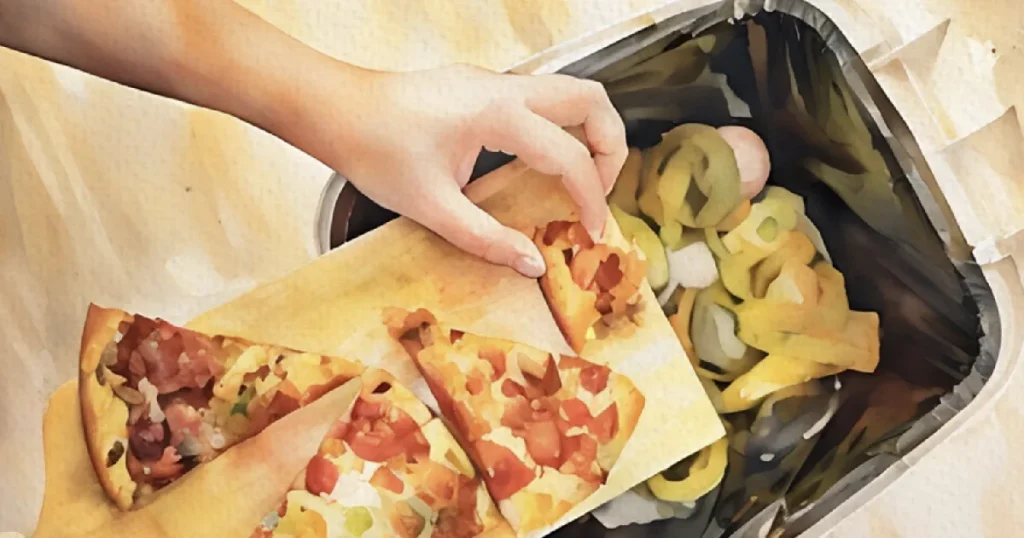
Food waste is a huge issue, with the UK throwing away 9.5 million tonnes of food every year. This waste contributes to unnecessary carbon emissions, water wastage, and landfill overflow, all of which have a significant impact on the environment.
By planning meals in advance, you can:
- Use ingredients more efficiently: Cooking in batches means you use up fresh produce before it spoils.
- Reduce leftovers that go uneaten: Pre-portioned meals prevent excess food from ending up in the bin.
- Shop with purpose: A meal plan helps you buy only what you need, avoiding impulse purchases that often go to waste.
- Store food properly: Freezing and refrigerating meals correctly extends their shelf life and reduces spoilage.
Less waste means a lower carbon footprint and a more sustainable way of eating. Meal prepping isn’t just good for you—it’s good for the planet, too!
4. You’ll experience less stress around mealtime decisions.

We make over 200 food-related decisions a day, from what to eat to when to eat and how much. That’s a lot of mental energy! Meal prepping removes the guesswork and makes mealtime a no-brainer.
- No last-minute panic: You always have something ready to eat.
- Grab-and-go convenience: Prepped meals make it easy to eat well even on busy days.
- Less cleaning: Cooking once means fewer dishes to wash throughout the week.
Registered dietitian and founder of Dietitian Ro Ltd, Ro Huntriss points out:
“Although it requires some time upfront to prepare the meals in bulk, it saves time overall, eliminating daily decision-making and having to make meals when you may not have the time.”
5. It helps you stay on track with fitness and health goals.

Whether you’re trying to lose weight, build muscle, or simply maintain a balanced diet, meal prepping makes it easier to stay on track. Instead of relying on portion estimates or restaurant-calculated calories, you can precisely measure your meals to match your fitness goals.
Meal prepping benefits fitness enthusiasts by:
- Ensuring consistency in calorie intake: No guesswork in portion sizes.
- Providing nutrient-dense meals: Fuels your body with the right balance of protein, carbs, and fats.
- Avoiding temptation: If your meals are ready to go, you’re less likely to grab something unhealthy.
6. Meal prepping can be extremely helpful during illness or recovery.

If you’re recovering from an illness, surgery, or simply need to follow a strict diet, meal prepping can be a lifesaver. Instead of struggling to cook when you’re low on energy, you’ll already have pre-portioned, nutritious meals waiting for you.
- Supports dietary restrictions: Easily prepare meals that meet your needs (gluten-free, low-sodium, diabetic-friendly, etc.).
- Less effort when unwell: No need to cook when you’re not feeling 100%.
- Ensures proper nutrition: Helps you heal faster with balanced meals.
7. Busy parents can rely on meal prepping to make family dinners easier.

If you’re a parent juggling work and childcare, or a professional balancing a demanding schedule, cooking every day just might not be practical. Meal prepping helps you stay organised and ensures there’s always something nutritious ready to eat.
- For parents: No more scrambling to put together dinner when you’re already exhausted.
- For professionals: Grab-and-go lunches save you from overpriced workday takeaways.
- For anyone with a packed schedule: Less time in the kitchen, more time for what matters.
8. Meal prepping encourages better habits and an organised routine.

One of the underrated benefits of meal prepping is that it builds a consistent routine around food. When you have a plan, you’re less likely to make impulsive (and often unhealthy) choices.
- Structured meal times: Helps regulate hunger and digestion.
- More mindful grocery shopping: You buy only what you need.
- Develops discipline: Sticking to a meal prep plan creates long-term healthy habits.
How to Get Started with Meal Prep
Meal prepping doesn’t have to be rigid or overwhelming—it’s all about making your week a little easier. Whether you want to save time, eat healthier, or just avoid the “what’s for dinner?” dilemma, prepping meals in advance can help. The key is to find a system that works for you.
Below is a step-by-step guide to help you get started, with flexible suggestions so you can meal prep in a way that fits your lifestyle.
Step 1: Plan your meals.

Before you start chopping and cooking, take a few minutes to decide what you’ll eat for the next several days. This is the foundation of meal prepping and helps you stay organised.
- Pick meals that fit your lifestyle.
- Choose recipes that match your schedule—quick breakfasts, easy lunches, hearty dinners, or grab-and-go snacks.
- If you’re just starting out, prepping for 3-4 days at a time might feel more manageable than planning for a whole week.
- Consider recipes that are easy to batch cook, like stir-fries, pasta dishes, soups, and grain bowls.
- Aim for a good balance.
- A mix of protein, healthy fats, fibre, and carbs will help keep you full and energized.
- Not sure where to start? A balanced meal could be as simple as grilled chicken (protein), quinoa (carb), roasted veggies (fibre), cooked in olive oil (healthy fat).
- Keep things interesting!
- Rotate flavours by using different seasonings or sauces to keep things interesting.
- If you get bored easily, plan “base” meals (e.g., cooked rice and chicken) and add different toppings or seasonings each day.
Step 2: Make a shopping list.
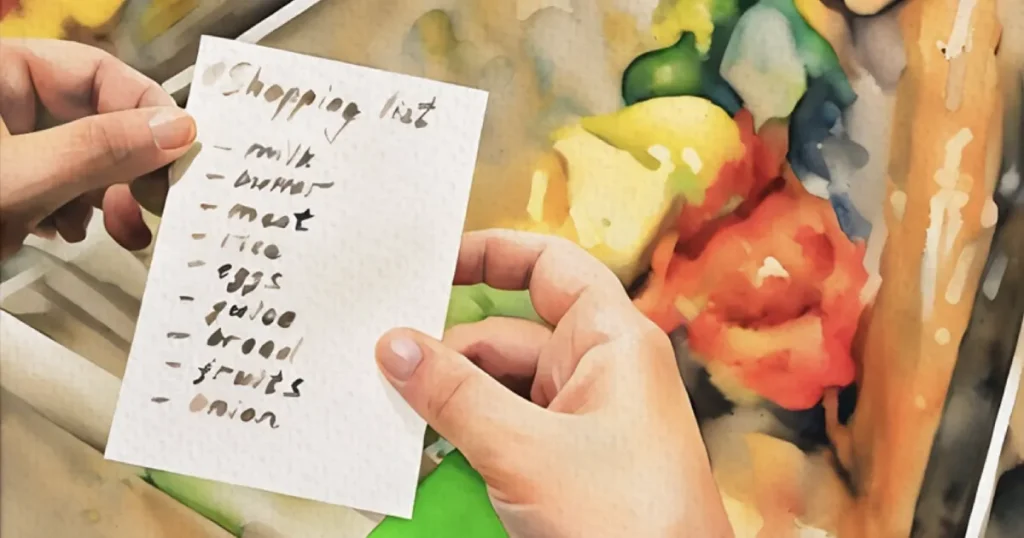
Once you have an idea of what you’d like to eat, putting together a shopping list makes things easier and helps you avoid unnecessary buys.
- Consider buying ingredients in bulk.
- If it makes sense for you, stocking up on pantry staples like rice, pasta, or lentils can be a great way to save money.
- Frozen veggies and proteins can also be handy if you don’t want to shop too often.
- Choose ingredients that work in multiple meals.
- Using overlapping ingredients can keep things simple and reduce waste.
- For example, a batch of roasted sweet potatoes could go into breakfast burritos, salads, or grain bowls.
- Go in with a plan, but stay flexible.
- It’s great to have a list, but if you see a good deal on something you like, you might want to swap it into your meal plan.
Step 3: Prep your ingredients.
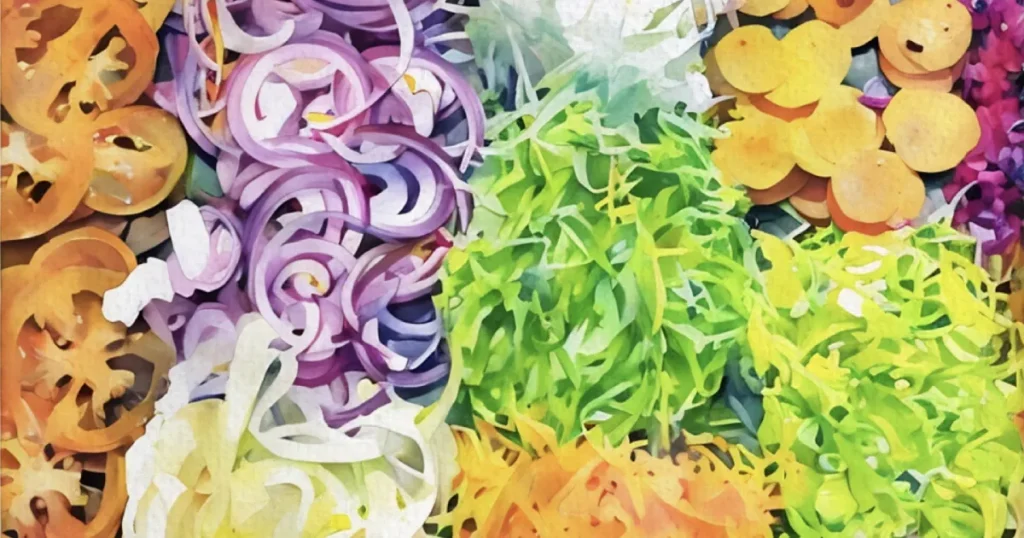
Prepping ingredients in advance can save a lot of time during the week. Even if you don’t cook everything at once, just washing and chopping things ahead of time makes meals come together faster.
- Wash and chop in advance.
- Washing and chopping veggies in one go can make cooking feel way easier later.
- If you eat a lot of salads, pre-washing greens and storing them with a paper towel can help keep them fresh.
- Cook grains and proteins in advance (if you want to).
- Having a container of pre-cooked rice, quinoa, or pasta on hand can make assembling meals a breeze.
- Grilling or roasting a few portions of protein ahead of time means you just have to reheat and serve when you’re ready to eat.
- Try marinating your food for extra flavour.
- If you have time, marinating proteins in advance can make a huge difference in taste.
- Even just tossing ingredients in a bit of seasoning before storing them can help.
Step 4: Cook your meals in batches.
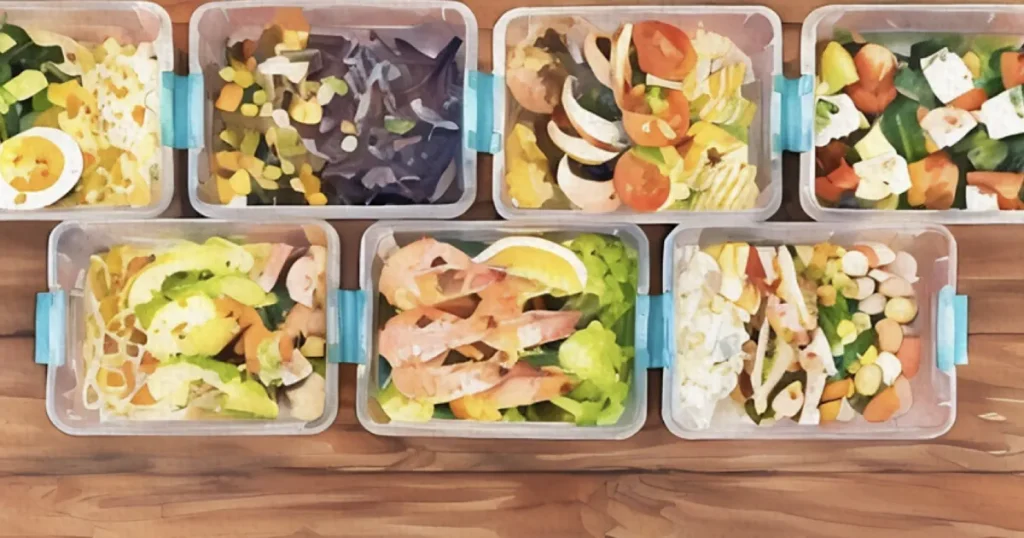
Batch cooking is where meal prepping really starts to save you time. Instead of cooking every night, you prepare several meals at once.
- Try different cooking methods.
- Sheet pan meals: Roast multiple ingredients at once (e.g., chicken, potatoes, and broccoli on one tray).
- Slow cooker or pressure cooker: Perfect for soups, stews, and curries with minimal effort.
- One-pot meals: Reduce washing up by making meals like chilli, pasta dishes, or stir-fries in a single pan.
- Cook multiple things at once.
- While grains cook on the stove, you can roast some veggies in the oven and let a slow cooker handle proteins.
- Cooking this way allows you to prep an entire week’s worth of food in just 1–2 hours.
- Mix and match for variety.
- Instead of fully assembling meals in advance, you can prep ingredients separately and combine them in different ways throughout the week.
- Example: Cook a big batch of chicken, then serve it with rice and stir-fry on one day, in a salad the next, and in a wrap later in the week.
Step 5: Store your meals in a way that works for you.
Meal prepping is only as good as your storage strategy. The right containers and storage methods can help keep your meals fresh, tasty, and safe to eat throughout the week. But you don’t have to overthink it—just a few small tweaks can make a big difference.
- Keep your meals in the fridge or freezer —depending on what suits you.
- If you’re planning to eat your meals within 3-4 days, storing them in the fridge is usually enough.
- If you like to prep in bigger batches, freezing meals can keep them fresh for up to 3 months—great for soups, casseroles, or proteins you can quickly reheat.
- Pick storage containers that fit your needs.
- The best containers are leak-proof, durable, and the right size for your meals. Different types work well for different purposes:
- Glass containers (great for long-term storage and reheating)
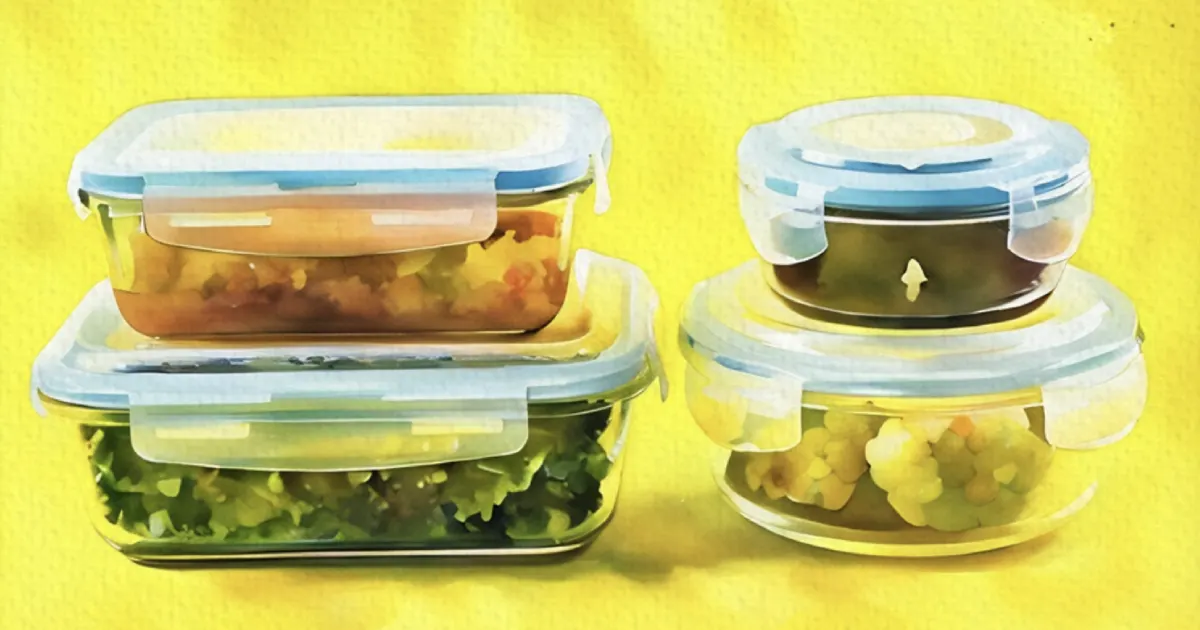
Glass containers are sturdy, don’t absorb food smells, and can go straight from fridge to microwave. They’re ideal if you want to keep meals fresh longer or prefer something more durable. A mixed set with various sizes (like Pyrex’s Food Storage Sets) is handy for storing different meal types—larger ones for batch-cooked meals, smaller ones for snacks or sauces. - Plastic bento-style containers (good for portioning and grab-and-go meals)

Lightweight, stackable, and easy to carry to work or school, bento boxes (like PrepBox’s Stackable Bento Lunch Boxes) are great if you like pre-portioning meals in advance. They work well for keeping lunches organised without taking up much fridge space. Look for ones that are microwave, freezer, and dishwasher safe for convenience. - Reusable freezer bags (best for saving space and freezing liquids)
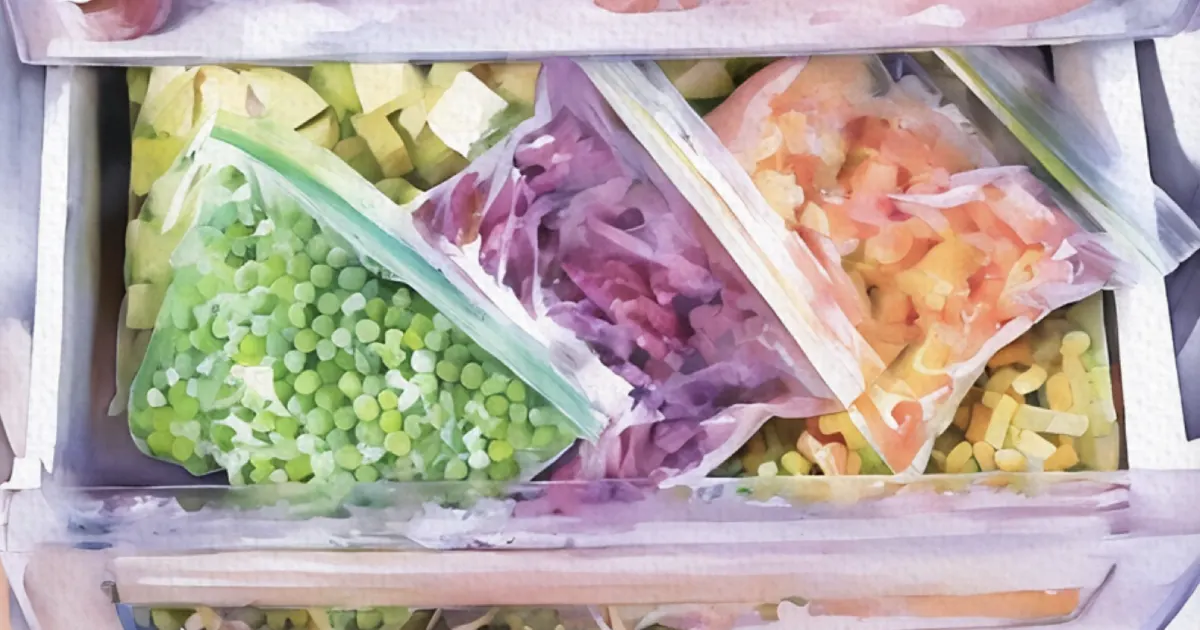
If you meal prep soups, sauces, or chopped ingredients, reusable and resealable freezer bags (like IKEA’s ISTAD bags) are a great space-saving option. They can be flattened and stacked to maximise freezer space.
- Glass containers (great for long-term storage and reheating)
- The best containers are leak-proof, durable, and the right size for your meals. Different types work well for different purposes:
- Label your meal prep containers if you think it’ll help you.
- If you’re going to prep a lot of meals at once, jotting down the date on a container can help you remember what to eat first. But if you know you’ll be eating everything within a few days, you can probably skip it.
- If you prefer not to put on any labels, you can try arranging the meals in your fridge from newest to oldest, so you naturally grab the ones that need to be eaten first.
The key is finding a storage system that works for you—whether that’s detailed labeling or just stacking meals where you’ll see them.
No pressure, just whatever makes your life easier!
How to Keep Your Meal Prep Fresh: Smart Tips for Storage
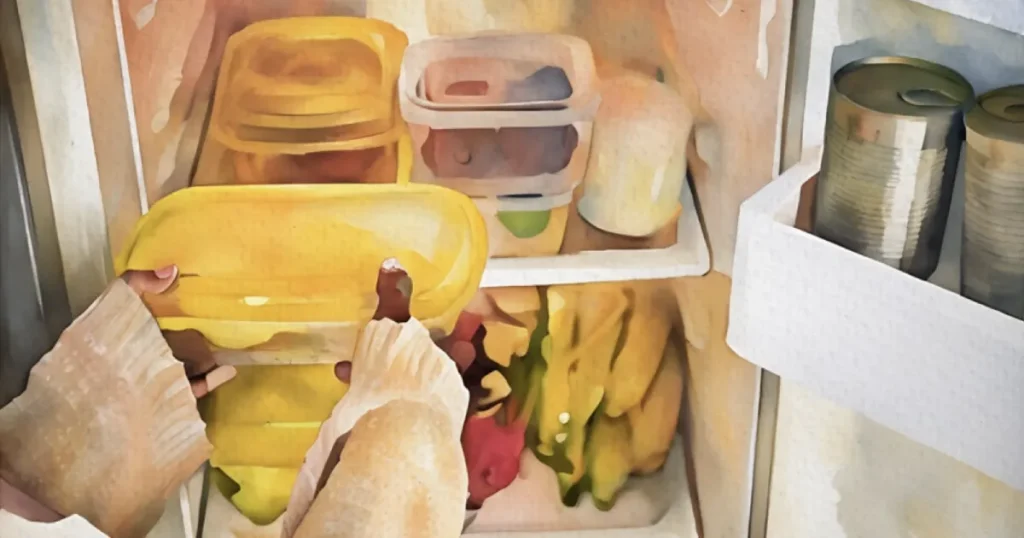
We’ve already talked about different storage containers, but let’s go a bit deeper into the little things that can make a big difference. Even with great meal prep habits, food can sometimes go bad too soon, lose its texture, or just not taste as fresh as you’d like.
Here’s how to avoid common storage pitfalls and keep your meals at their best.
Storing Cooked vs. Raw Ingredients
- Cooked meals should be cooled to room temperature before storing to prevent condensation, which can lead to sogginess.
- Raw ingredients (like chopped vegetables or marinated proteins) should be stored separately to maintain texture and prevent cross-contamination.
- Leafy greens last longer when washed, dried thoroughly, and stored with a paper towel to absorb excess moisture.
- Grains and proteins can be portioned into containers and kept in the fridge or freezer for easy reheating.
How to Keep Your Meal Prep Fresh in the Fridge
- Keep sauces and dressings separate: This prevents grains and veggies from getting soggy. Store them in small containers and add them just before eating.
- Use airtight containers: Exposure to air can dry out food and make it spoil faster. A good seal helps keep meals fresh.
- Layer salads the right way: Start with hearty ingredients like grains and proteins at the bottom and delicate greens at the top. Shake or mix when ready to eat.
- Store meals strategically in the fridge: Keeping your fridge organised also helps maintain steady cooling—avoid overcrowding so air can circulate properly. Where you place your food in the fridge matters:
- Bottom shelves: Coldest part of the fridge, best for perishable items.
- Top shelves: According to Chris Hassall, a food safety expert from Virtual College by Netex, pre-cooked meals and leftovers should be stored on the top shelf to reduce the risk of cross-contamination.
- Avoid the fridge door: This area is exposed to fluctuating temperatures, which can cause food to spoil faster.
How to Properly Freeze Your Meal Prep
- Portion before freezing: Freezing meals in single servings makes it easier to defrost just what you need, instead of thawing an entire batch.
- Cool food before freezing: Putting hot food straight in the freezer can cause ice crystals to form, leading to texture changes. Let meals cool first.
- Use freezer-safe containers or bags: Regular containers may crack or allow freezer burn. Freezer-friendly glass containers or reusable silicone bags work best.
How Long Will Meal Prepped Food Last?
Storage times vary depending on the type of food:
| Food | Fridge | Freezer |
| Cooked proteins (chicken, beef, pork) | 3-4 days | Up to 3 months |
| Cooked grains (quinoa, rice, pasta) | 3-4 days | Up to 3 months |
| Seafood | 2-4 days | 2-3 months |
| Salads | Up to 5 days | Not recommended |
| Cooked vegetables | 3-5 days | 8-12 months |
| Dairy-based meals (creamy sauces) | 3-4 days | Not recommended |
| Overnight oats (no fresh toppings) | 2-3 days | Up to 3 months* |
| Soups and stews | 2 days | Up to 3 months |
*Overnight oats mixed with yogurt or milk freeze well since the oats absorb the liquid, keeping a creamy texture after thawing. In contrast, creamy pasta sauces often separate when frozen, as the fat and water break apart. While still safe to eat, they may need vigorous stirring or reheating, but the original texture might not fully return.
These storage times are general guidelines and assume your food is properly stored in airtight containers at safe temperatures. Even if your food is within the recommended storage time, it’s always best to check for freshness before eating.
Here’s a general rule of thumb when checking your food for freshness:
How to Tell if Your Meal is Still Good

Not all meal-prepped food holds up the same way throughout the week. While most cooked meals are safe to eat for about four days in the fridge, that doesn’t mean they’ll all taste great for that long.
- Smell check: If something smells off, it’s best to toss it.
- Check for moisture buildup: Excess condensation inside a container can be a sign of spoilage.
- Watch for changes in texture: Slimy or mushy textures (especially for proteins and veggies) mean it’s time to let go.
- Eye test: Look for any discolouration, mold spots, or an unusual appearance that suggests the food has gone bad.
- Check expiration dates: If you use store-bought ingredients in your meal prep, double-check their shelf life to avoid using expired items.
Common Meal Prep Mistakes & Challenges
Meal prep is meant to make life easier, but that doesn’t mean it always feels easy. If you’ve ever struggled with motivation, variety, or just the frustration of food not turning out how you expected, you’re not alone.
These common challenges can make meal prepping feel overwhelming—but with the right strategies, you can make it work for your lifestyle.
1. No motivation to meal prep

Some days, the idea of meal prepping sounds great—until it’s time to actually do it. Whether you’re too tired, busy, or just not in the mood, prepping meals in advance can feel like a chore.
But skipping it often leads to grabbing unhealthy takeout or scrambling for last-minute meals. The key is to make meal prep feel easy and natural rather than a task you have to check off.
- Make it easier on yourself: Instead of prepping every single meal, start small—maybe just breakfast for the week or a few grab-and-go snacks. Even prepping one component, like chopped veggies or cooked rice, saves time later.
- Use shortcuts: Pre-washed greens, frozen pre-cut veggies, and pre-cooked proteins (like rotisserie chicken or canned beans) can cut down on prep time without sacrificing quality. No shame in using convenience foods!
- Make it enjoyable: Listen to a podcast, watch a show in the background, or invite a friend or partner to meal prep with you.
- Create a routine that fits your schedule: If Sunday meal prep feels like a burden, try spreading it out—cook grains one night, roast veggies another, and assemble meals when needed.
2. It’s hard to figure out what to cook
Sometimes the hardest part of meal prep is just figuring out what to cook. If you find yourself stuck in a rut, there are plenty of ways to get inspired without spending hours searching for recipes.
- Keep it simple: You don’t need fancy recipes. A basic formula like protein + carb + veggies + sauce works every time (e.g., salmon + rice + broccoli + lemon dressing).
- Find inspiration online: Pinterest, Instagram, and TikTok are full of quick and easy meal prep ideas. Allison Lesko, RD, LD, founder of Lesko Health, says that she often looks to Pinterest and Instagram for inspiration, then tweaks recipes to make them more balanced. Search for terms like “easy meal prep,” “lazy meal prep,” or “high-protein meal prep” to find recipes that match your needs.
- Batch prep ingredients instead of full meals: If committing to full meals feels limiting, just prep basic components. Cook a big batch of rice, roast different veggies, and have a few proteins ready so you can mix and match throughout the week.
- Use a recipe generator: Online tools like Tesco’s Real Food, RecipeRadar, and WiskWiz let you enter ingredients you already have and suggest meal ideas.
3. Eating the same thing feels boring
Eating the same meal every day can quickly turn meal prep from convenient to uninspiring. Even your favourite dishes can start to feel dull if there’s no variety. The trick is to keep things interesting without adding too much extra work—small changes in flavours, ingredients, or how meals are assembled can make a big difference.As Rachel Wilkerson Miller, editor-in-chief of SELF at CondéNast puts it:
“The reality of trying to eat healthy is that it can often get super repetitive, especially if you don’t have a ton of time, energy, and money to devote to meal planning and preparation. (…) But homemade (or homemade-ish or just exceptionally great store-bought) dressings and toppings are typically amazing, and have the power to really transform staples like sweet potatoes, green beans, chicken, and eggs.”
- Switch up flavours with sauces and seasonings: A simple chicken and rice dish can feel completely different depending on whether you add BBQ sauce, curry seasoning, or soy-ginger dressing.
- Freeze portions for later: If you meal prep five days’ worth of the same meal, freeze a couple of servings so you can swap them out later and avoid burnout.
- Prep base meals: Cook a base like grilled tofu or roasted veggies and pair it with different add-ons each day to keep things interesting.
- Keep an emergency backup meal: If you can’t face another serving of what you’ve prepped, have a quick, healthy alternative on hand—like frozen dumplings, a wrap, or eggs and toast.
4. Too tired or unwell to do meal prep
Meal prepping can feel like a lot of work, especially when you’re exhausted or not feeling your best. But it doesn’t have to take hours—there are plenty of ways to cut corners without sacrificing quality.
- Break it up into smaller tasks: Instead of cooking everything in one day, spread it out—chop veggies one night, cook proteins another, and assemble meals as needed.
- Choose no-cook meals: Try mason jar salads with pre-washed greens and store-bought dressing, protein snack boxes with nuts, cheese, and deli meat, or pre-assembled sandwich kits so you can grab and go.
- Use appliances to do the work for you: Slow cookers, air fryers, and pressure cookers can prepare meals with minimal effort.
- Have easy “assembly” meals on standby: Keep ingredients like canned beans, frozen veggies, and pre-cooked grains stocked so you can throw together a quick meal without much prep.
5. Meal prepping feels overwhelming before you even get started
You love the idea of meal prepping, but every time you think about it, it just feels like too much. Where do you even begin?
If the overwhelm is stopping you from getting started, try these simple ways to make it feel more manageable:
- Start small: You don’t have to prep an entire week’s worth of meals right away. Try just one meal a day or a few grab-and-go snacks.
- Use shortcuts: Pre-cut veggies, canned beans, rotisserie chicken—there’s no rule that says everything must be made from scratch.
- Stick to simple meals: You don’t need elaborate recipes. Focus on easy, repeatable meals that require minimal prep.
- Think smaller: Maggie Hoffman, former Digital Director of Epicurious, suggests trying a mini-plan – prep for just two days at a time. Cook one big meal, repurpose the protein for the next day, then take a breather before planning the next set of meals.
- Remember – done is better than perfect: Even prepping just a little is better than doing nothing at all.
6. Forgetting to bring prepped meals to work
Forgetting to bring your prepped meals can be frustrating, especially when you’ve put in the effort to plan ahead. Busy mornings and last-minute rushes make it easy to leave food behind. If you often forget to bring your food to work or school, try building habits that make it easier to remember.
- Pack the night before: Store your lunch in a grab-and-go container and place it near your bag or keys so you won’t forget it.
- Set a reminder: A simple phone alarm in the morning can help make bringing your meal a habit.
- Keep emergency food at work: Stash protein bars, nuts, or a healthy instant meal in your desk as a backup.
7. Not in the mood for the meal you’ve prepped
Some days, the meal you planned just doesn’t sound appealing when it’s time to eat. Instead of forcing yourself to eat something you’re not excited about, adding a little flexibility to your meal prep can help keep things enjoyable.
- Give yourself options: Prep a couple of different meals so you’re not locked into one choice.
- Store sauces separately: Adding a new sauce or topping can completely change a dish—think sriracha mayo one day, pesto the next.
- Freeze extras for later: If you don’t want it now, you can always swap it out for something else and eat it another time.
8. Reheated food doesn’t taste the same
Reheating leftovers can sometimes leave them dry, mushy, or just…not as good. Proper storage and reheating techniques can help preserve taste and texture, so your meals stay just as enjoyable the second time around.
- Add moisture before reheating: A splash of water, broth, or sauce can help revive rice, pasta, and proteins.
- Use an air fryer or oven for crispy foods: Roasted potatoes, breaded chicken, and baked dishes often reheat better this way than in the microwave.
- Store toppings and dressings separately: Keeping crunchy toppings (like nuts or croutons) and fresh ingredients (like herbs or cheese) separate until serving helps maintain their texture.
9. Prepped meals don’t look as good as the ones on social media
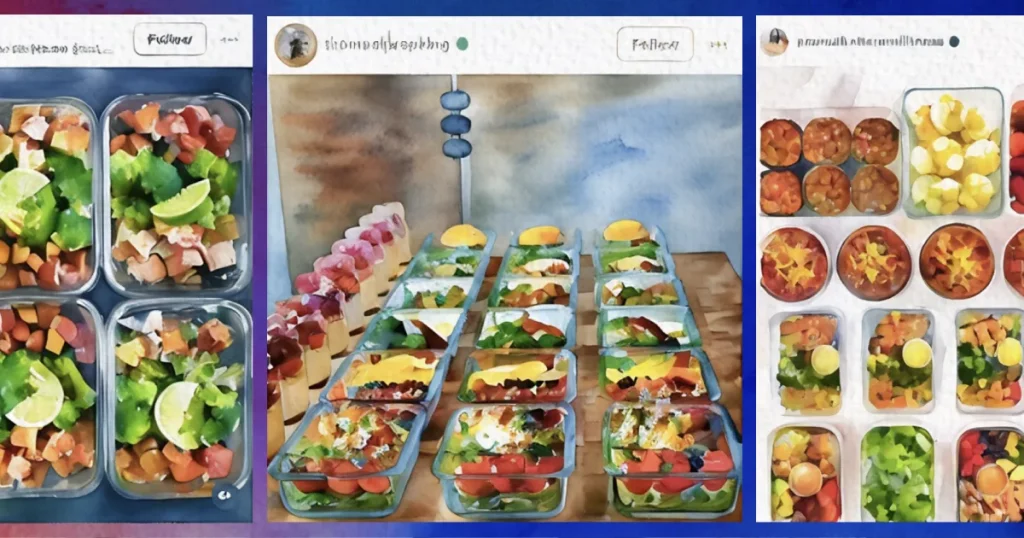
It’s easy to feel discouraged when your meal prep doesn’t look as polished as what you see online. But remember—those photos are staged, edited, and often unrealistic for daily life. The goal isn’t perfection; it’s making meals that are nutritious, satisfying, and easy to grab.
- Focus on taste, not appearance: Your food doesn’t need to be picture-perfect—it just needs to be enjoyable and nourishing.
- Use divided containers: These help keep food separate and visually appealing without much effort.
- Add fresh toppings for a quick upgrade: A sprinkle of herbs, a drizzle of sauce, or a handful of seeds can make a meal look and taste better instantly.
10. The stored food spoils too fast
If your prepped meals aren’t lasting as long as you’d like, small adjustments to your storage routine can make a big difference. Proper containers, cooling techniques, and simple fridge organisation all play a role in keeping your food safe and tasty for longer.
- Choose airtight containers: These help prevent moisture and air exposure, keeping food fresher for longer.
- Let hot food cool before sealing: Sealing hot food traps steam, creating condensation that speeds up spoilage. Let meals cool slightly before closing the lid.
- Store strategically in the fridge: Keep perishable items on lower shelves where it’s coldest, and avoid storing meals in the fridge door where temperatures fluctuate.
- Freeze meals you won’t eat in a few days: If you won’t eat a meal within 3-4 days, freeze it in portion-sized containers for easy grab-and-go options later.
- Use paper towels for moisture control: Placing a paper towel in containers with leafy greens or chopped veggies can absorb excess moisture and prevent sogginess.
- Keep ethylene-producing fruits separate: Fruits like bananas, apples, and avocados release ethylene gas, which can cause nearby produce (like leafy greens) to spoil faster.
11. It’s hard to stay consistent with meal prepping
Meal prepping can start off strong, but keeping up with it week after week can be challenging. A packed schedule, changing routines, or just feeling burnt out can make it hard to stay consistent. Making meal prep more flexible and manageable can help it fit into your lifestyle long-term.
- Schedule a dedicated meal prep day: Treat it like an appointment. Choose a time that works for your schedule, whether it’s Sunday afternoon or a midweek refresh.
- Start small: Instead of prepping for the entire week, begin with just two or three meals to make it more manageable.
- Have backup meals ready: Keep a stash of frozen, prepped meals for weeks when you don’t have time to cook.
12. Meal prep containers are taking up too much space
A well-stocked fridge is great—until it starts feeling cluttered and disorganised. Bulky containers can take up a lot of room, making it hard to store other groceries or find what you need. Using space-saving storage solutions can help keep things organised.
- Use stackable containers: This helps maximise space and keeps your fridge organised.
- Opt for freezer bags: Store soups, sauces, and meals in reusable freezer bags instead of bulky containers to save space.
- Label meals with expiration dates: This makes it easy to grab meals in the right order and avoid food waste.
- Vacuum-seal bulk items: Using vacuum-sealed bags for proteins or bulk ingredients helps save space and extend freshness.
- Use bins or dividers: Keeping meals organised in separate bins prevents clutter and makes meal selection easier.
13. The portions are never right (too little or too much)

Getting portion sizes just right can be tricky—sometimes you prepare too much and risk food waste, while other times, you don’t make enough and end up hungry. Striking the right balance makes meal prepping more effective.
- Use a kitchen scale or measuring cups: This helps ensure consistency, especially for calorie tracking or balanced meals.
- Start with smaller portions: You can always add more later, but it’s harder to deal with excess food.
- Consider meal type and activity level: A light workday meal might need smaller portions than a post-workout dinner.
- Store extra portions separately: Freeze or refrigerate leftovers in individual servings to prevent overeating.
- Adjust as you go: If meals consistently feel too big or too small, tweak portion sizes for the next round of meal prep.
14. You always run out of ingredients or have too much left over
Keeping the right amount of ingredients on hand can be tricky—you either end up scrambling to replace what’s missing or staring at extra food with no plan for it. This can lead to wasted food, last-minute grocery runs, or meals that don’t quite come together as planned.
Here are some tips to avoid this from happening:
- Plan recipes that share ingredients: If one meal calls for half a can of beans, choose another recipe that can use the rest.
- Take inventory before shopping: A quick pantry and fridge check can prevent duplicate purchases or missing items.
- Portion out ingredients before cooking: Weighing or measuring ingredients can help prevent overuse or shortages.
- Keep a running grocery list: Jot down items as you use them so you know what to restock.
- Freeze or repurpose leftovers: If you end up with extra ingredients, find creative ways to use them in future meals or freeze them for later.
- Be flexible: If you run out of an ingredient, swap in a similar one instead of making an extra grocery trip.
15. All the work doing meal prep leaves you exhausted
Meal prepping is supposed to make life easier, but sometimes, after hours of chopping, cooking, and cleaning, you’re left feeling drained instead of accomplished. If meal prep feels like a second job, it might be time to switch things up.
- Spread it out: You don’t have to do all your meal prep in one day. Break it up over the week or prep in shorter bursts.
- Keep it simple: Stick to easy, no-fuss recipes. Not every meal needs to be gourmet—sometimes, a few prepped ingredients are enough.
- Use efficient cooking methods: Sheet pan meals, slow cookers, and Instant Pots let you cook in batches with minimal effort.
- Clean as you go: Tidying up along the way prevents a big mess at the end and makes the process feel less draining.
- Take breaks: Listen to a podcast, play music, or set a timer to remind yourself to step away for a breather.
- Adjust your expectations: Meal prep doesn’t have to be an all-day event. Even prepping just a few meals ahead can still be a win!
If meal prepping still feels like a lot to juggle, why not have someone else handle it for you? With Cheffo, you can connect with home cooks and professional chefs to get custom, ready-to-eat meals tailored to your needs. Whether you love meal prep but need a break or just want delicious, home-cooked meals without the work, Cheffo makes it easy to enjoy fresh, hassle-free food—without spending hours in the kitchen.
Easy Meal Prep Ideas for Breakfast, Lunch, and Dinner
Meal prepping doesn’t have to be all or nothing—it’s about making your life a little easier. If you don’t want to commit to full pre-made meals, prepping versatile ingredients can still set you up for success. As Kelli Foster, Senior Contributing Editor at The Kitchn, explains:
“Even when I don’t go into the week with a set meal plan, I know I’m in really good shape as long as I have a batch of whole grains or rice, at least one substantial ingredient that’s packed with protein (think: chicken, meatballs, or tofu), an assortment of cooked and raw vegetables, and a sauce. Those four components are the secret to make-ahead meals I can stretch throughout the week for breakfast, lunch, and dinner.
Not only can all of those ingredients be mixed and matched to put together a bunch of different meals, but it’s also my secret weapon for dinners where everyone has different needs and preferences.”
Whether you want to prep full meals ahead of time or just have a few ingredients ready to mix and match, here are some ideas to help you get started. Feel free to pick what works best for you!
Breakfast
These breakfasts can be made in advance and stored in the fridge or freezer:
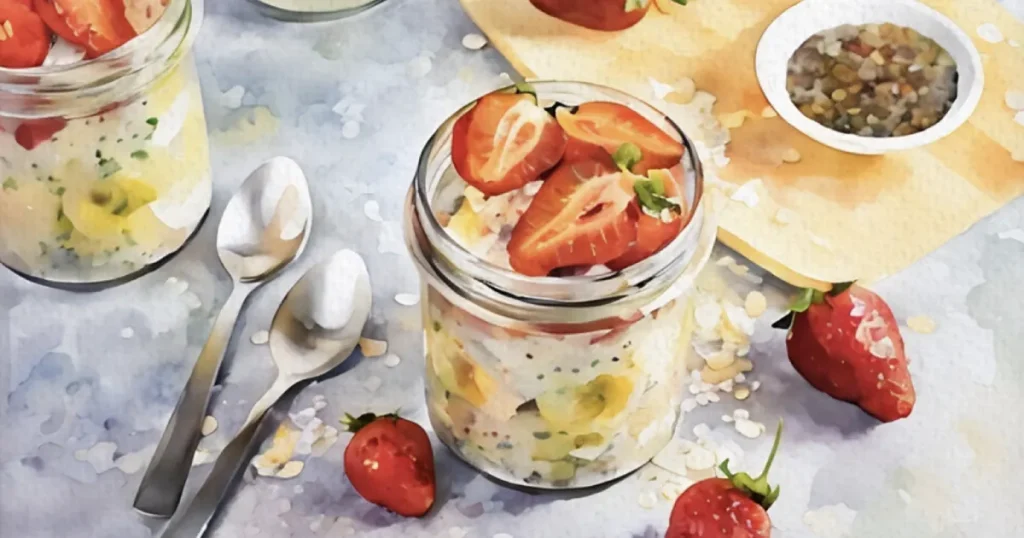
- Overnight oats: Mix rolled oats, milk (or yogurt), and toppings like fruit, nuts, or cinnamon in jars. They can last up to 4 days in the fridge.
- Egg muffins: Whisk eggs with veggies, cheese, and protein, then bake in muffin tins. Store in the fridge (up to 3 days) or freeze.
- Breakfast burritos: Scramble eggs, add cheese, beans, or veggies, and wrap them in tortillas. Freeze and reheat in the microwave.
- Chia pudding: Mix chia seeds with milk and a sweetener, then let it sit overnight. Pre-portion into jars for easy breakfasts.
- Baked oatmeal: Make a large batch, cut into squares, and store for quick reheating.
- Freezer pancakes/waffles: Cook a batch, let them cool, then freeze. Pop them in the toaster when needed.
Lunch
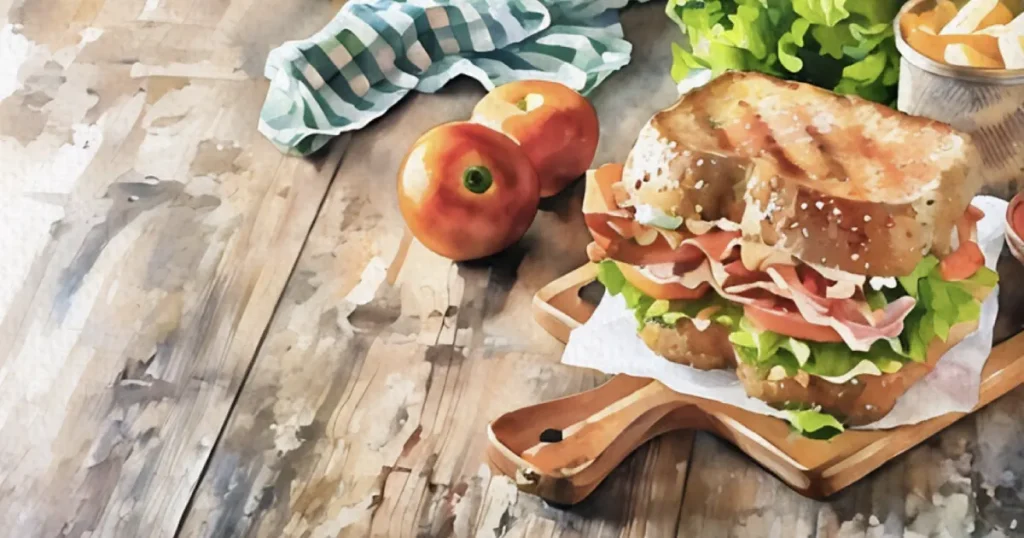
Both at-home and work lunches can be prepped ahead, so you’ll always have something ready no matter where you eat. Just pick what fits your routine!
For Work
These meals are designed to be easy to transport, require minimal assembly, and can be eaten cold or quickly reheated.
- Pre-portioned grain bowls: Pack cooked quinoa or brown rice with roasted veggies and a protein. Store in microwave-safe containers for easy reheating.
- Wraps & roll-ups: Make ahead with protein, greens, and spreads (hummus, pesto, or avocado). Wrap tightly and store in the fridge.
- Cold pasta salad: Cook pasta, toss with protein and veggies, and store in a dressing-coated container to prevent drying out.
- Bento box lunches: Pack a mix of protein (boiled eggs, tofu, grilled chicken), cheese, crackers, fruit, and nuts for a balanced, no-heat meal.
- Soup or chili: Store in a thermos or reheat at work. Freeze extras for later.
- Stuffed pitas or sandwiches: Prep ahead with sturdy fillings like grilled chicken, chickpea salad, or deli meats. Keep spreads separate to prevent sogginess.
For at Home
If you’re working from home or just prefer to eat at home, these meals allow for quick reheating and minimal prep.
- Pre-cooked protein + fresh additions: Heat up pre-grilled chicken, tofu, or fish, and pair with fresh greens or a quick side.
- Stir-fry bowls: Pre-chop ingredients and keep a stir-fry sauce ready so you can quickly cook everything fresh in 10 minutes.
- Sheet pan leftovers: Roast extra portions of veggies and protein ahead of time and simply reheat when it’s lunchtime.
- Oven-ready casseroles: Make a big batch of lasagna, enchiladas, or baked pasta at the start of the week for easy reheating.
- Rice & bean bowls: Cook rice and beans in advance, then mix in avocado, salsa, and a protein for a quick meal.
- Homemade freezer meals: Keep a stash of pre-made freezer-friendly meals like burritos, soups, or curries that you can reheat quickly.
Dinner
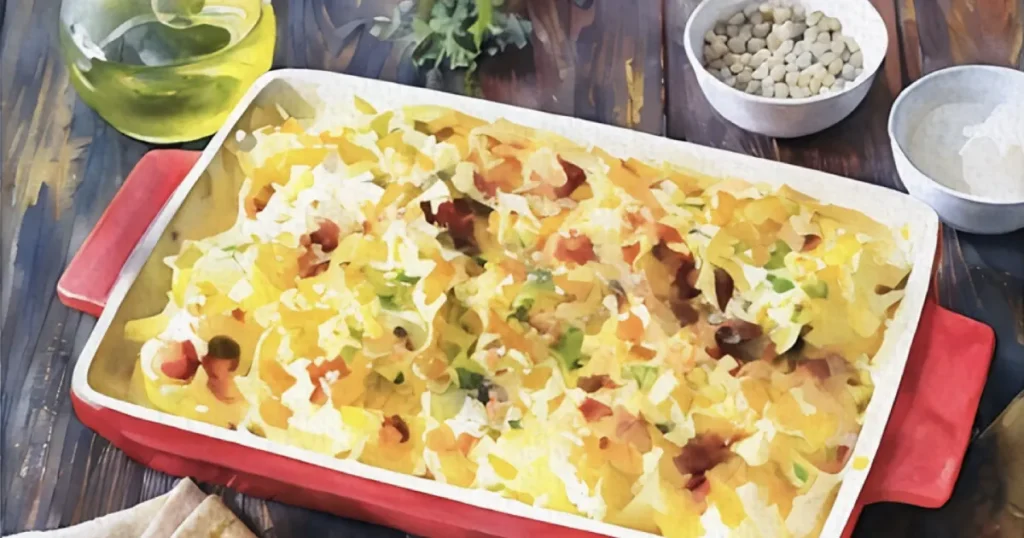
Dinners that can be fully prepped ahead of time or made in big batches to reheat throughout the week. These meals save time while still tasting great after a quick reheat.
- Casseroles & bakes: Lasagna, enchiladas, baked pasta, or shepherd’s pie can be fully cooked and stored in portions.
- Soups & stews: Chili, lentil soup, minestrone, or creamy pumpkin soup last well in the fridge and taste even better as flavours develop.
- Curries & stir-fries: Make a large pot of curry (chickpea, tofu, or chicken) and store with separate rice or naan for easy reheating.
- Slow cooker or instant pot meals: Cook shredded chicken, pulled pork, or hearty stews in bulk and portion out for multiple nights.
- Meatballs & protein bases: Prep a batch of turkey, beef, or plant-based meatballs to pair with pasta, rice bowls, or subs.
- Stuffed peppers: Prep a batch with quinoa, lentils, or ground turkey and freeze before or after baking.
- Marinated proteins: Freeze chicken or tofu in a marinade so it’s pre-flavoured and ready to cook when thawed.
- One-pan bakes: Prepare dishes like casseroles or vegetables for roasting, then freeze them – take them out to bake when ready to eat.
Snacks & Desserts
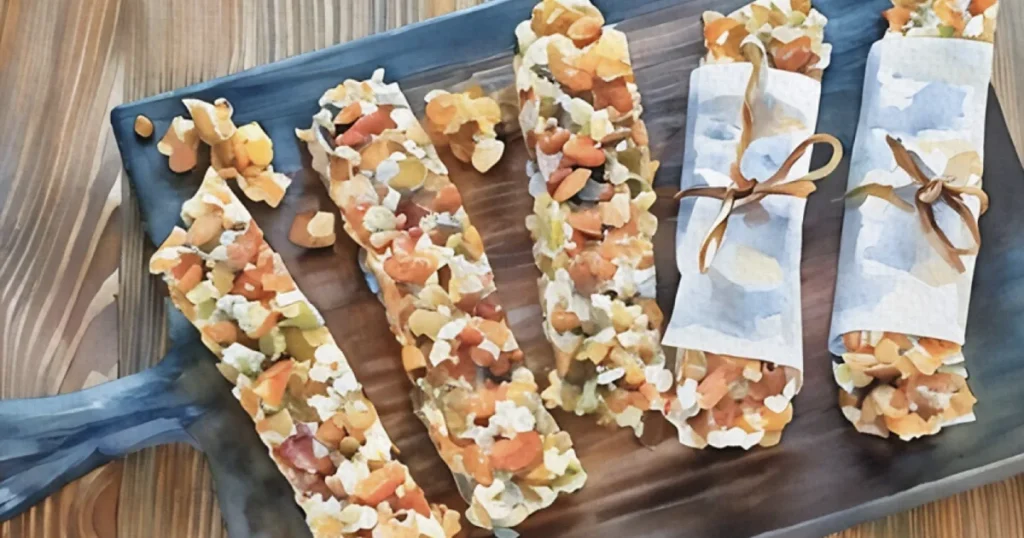
If you like having snacks ready, here are some options:
- Energy bites: Mix oats, nut butter, honey, and add-ins like chocolate chips or seeds. Roll into balls and store in the fridge for a quick snack.
- Yogurt parfaits: Layer yogurt, fruit, and granola in jars for an easy grab-and-go treat.
- Roasted chickpeas or nuts: A crunchy, protein-packed snack that’s great for keeping energy up during the day.
- Homemade granola bars: Make a batch of bars with oats, nuts, dried fruit, and honey for a healthier snack option.
- Veggies & hummus: Pre-cut carrots, cucumbers, and bell peppers and pair them with hummus for a simple, nutritious snack.
- Frozen banana bites: Slice bananas, dip in melted dark chocolate, and freeze for a naturally sweet treat.
The Best Meal Prepping Apps to Help You Stay Organised
If you’re looking for ways to make meal prepping easier, there are plenty of apps that can help. Whether you want to organise your recipes, plan meals ahead, or streamline grocery shopping, these apps offer useful features to keep things simple.
You can use them to plan as much or as little as you like, depending on what works best for you.
- Plan to Eat – An all-in-one meal planning tool that lets you store unlimited recipes, categorise them, and easily search for what you need. Instead of digging through bookmarks or handwritten notes, you can build a meal plan that fits your schedule with a simple drag-and-drop calendar.
- Paprika – More than just a recipe manager, Paprika allows you to save recipes from websites, create grocery lists, and plan your weekly meals with ease. It even lets you scale recipes up or down and keeps track of ingredients you already have.
- Mealime – Mealime makes meal planning effortless with personalised recipes, a smart grocery list, and flexible meal prep options. You can set dietary preferences, filter out allergens, and import recipes from the web. Plus, it offers cooking reminders and helpful cookware suggestions to streamline the process.
- OrganizEat – A simple and convenient meal-planning app that helps you store, organise, and access all your favourite recipes in one place. You can snap photos of handwritten recipes, import recipes from top cooking sites, or type them in manually. The app includes a meal planner calendar, a grocery list generator, and offline access, making it easy to stay organised without relying on internet access.
- MealPrepPro – A smart meal-planning app that helps you save time and stay on track with your health goals. It offers thousands of customisable recipes tailored to your calorie needs, diet preferences, and portion sizes. The app organises your meal plan, grocery list, and schedule in one place, automatically adjusting recipes based on your likes, prep time, and cooking history.
- Trello or Notion – If you prefer a more customisable approach, you can create your own meal prep board to track meals, shopping lists, and prep schedules.
- Google Calendar – If you like keeping everything in one place, Google Calendar can be used to schedule meal prep sessions, set reminders for when to defrost ingredients, and plan out meals for the week.
- Cheffo – Cheffo takes the stress out of meal planning by connecting you with cooks who can prepare delicious, customised meals just for you. Simply choose your meals, set your preferences, and let a skilled cook handle the rest. No more grocery shopping, chopping, or last-minute meal stress—just fresh, convenient, and tasty meals tailored to your lifestyle.
Common Myths & Misconceptions About Meal Prep (Debunked!)
Meal prepping can be a game-changer, but there are plenty of myths that might make it seem more complicated or limiting than it actually is.
The truth is, meal prep is flexible—you can tailor it to fit your lifestyle, whether you want to save time, eat healthier, or just make life a little easier. Here are some common misconceptions that might be holding you back:
Myth: You have to eat food the same day it’s cooked for it to be safe.
Freshness and safety depend more on proper storage and reheating than eating food right away. Most cooked meals stay fresh for 3–5 days in the fridge when stored in airtight containers. If you want meals to last even longer, freezing them can keep them safe for weeks or even months.
When reheating, make sure food reaches at least 75°C (167°F) to kill any bacteria. So, as long as you store and reheat meals properly, you can enjoy home-cooked food without having to cook daily!
Myth: Meal prepping means eating the same thing every day.
It doesn’t have to! Meal prep isn’t just about making identical meals in bulk—it’s about making mealtime easier and more flexible.
Instead of prepping the same meals for each day of the week, try preparing versatile components like proteins, grains, and veggies that you can mix and match throughout the week. For example, roasted chicken can be used in tacos one day, a grain bowl the next, and a hearty soup later in the week.
With a little planning, meal prep gives you both convenience and variety—no boring repeats necessary!
Myth: Meal prep is only for saving money.
While meal prepping can help with budgeting by reducing food waste and minimising takeout, it’s not just about cutting costs. Meal prep is about control—over your time, nutrition, and ingredients.
You can even use it to prioritise food quality by selecting premium ingredients, organic produce, or specialty items that align with your health goals or personal tastes. Whether you’re meal prepping to eat healthier, save time, or enjoy gourmet home-cooked meals without the daily hassle, it’s a tool that works for any lifestyle—not just for those on a budget.
Myth: Meal prep always saves time.
It depends on your approach. Meal prep can be a huge time-saver, but only if done strategically. Batch-cooking meals, prepping ingredients in advance, and using simple, repeatable recipes can cut down on daily cooking time.
However, if meal prep involves complicated dishes or multiple steps, it might not always feel like a time-saving solution. The key is to find a method that works for your schedule—whether that’s full meal prep, ingredient prep, or a mix of both.
Myth: You have to be fully committed to meal prepping for it to work.
Not at all! Meal prepping is flexible—you can do as much or as little as works for you. You don’t have to prep every single meal for the entire week. Even small steps, like prepping just breakfasts or chopping veggies in advance, can make a difference.
Some people like to batch-cook full meals, while others prefer prepping ingredients to mix and match throughout the week. You can still enjoy spontaneity, order takeout, or cook fresh meals when you feel like it—meal prep is just there to make life easier, not to lock you into a rigid plan.
Myth: Meal prepping is too much work to keep up with.
It doesn’t have to be! Meal prepping can be as simple or as elaborate as you want it to be. If the idea of cooking a week’s worth of meals feels overwhelming, start small. Prepping just a few key ingredients—like washing and chopping veggies, cooking a big batch of grains, or marinating proteins—can save time and make putting meals together much easier.
You don’t have to cook everything in advance; even small steps can make a big difference in reducing daily kitchen stress. Plus, the more you meal prep, the faster and more efficient it becomes!
Myth: You need fancy containers and expensive tools to meal prep.
While having good storage solutions can be helpful, you don’t need a full set of matching glass containers or high-end kitchen gadgets to meal prep effectively. Simple, budget-friendly options like reusable plastic containers, mason jars, or even repurposed food containers can work just as well.
Instead of splurging on specialty tools, focus on the basics—a sharp knife, a cutting board, and a reliable pan can go a long way. Meal prepping is about making your life easier, not more expensive, so use what you have and upgrade only if it adds real value to your routine.
Myth: You need to dedicate your whole weekend to meal prepping.
Meal prepping doesn’t have to take up your entire weekend. You can start small by prepping just a few meals or ingredients in under an hour. Even simple steps—like chopping veggies, marinating proteins, or cooking a big batch of grains—can make your weeknight cooking much faster and easier.
If you prefer, you can break meal prep into shorter sessions throughout the week instead of doing it all at once. Find a system that fits your schedule and lifestyle.
Myth: Prepped meals don’t taste as good as freshly cooked food.
When stored and reheated properly, prepped meals can be just as delicious as fresh ones. The key is using the right techniques—store meals in airtight containers to lock in freshness, and when reheating, add a splash of water, broth, or sauce to prevent dryness.
Choosing meals that reheat well, like stews, curries, and roasted vegetables, also makes a big difference. Meal prepping doesn’t mean sacrificing taste—it just takes a little strategy!
Myth: Meal prep is only for fitness enthusiasts or strict diets.
Meal prepping isn’t just for bodybuilders, athletes, or those following rigid meal plans—it’s for anyone who wants to make mealtime easier. Whether you’re a busy professional looking to save time, a parent juggling family meals, or someone who just wants to avoid daily cooking stress, meal prepping can fit your lifestyle.
It can help with portion control and nutrition, but it’s also great for reducing food waste, cutting down on last-minute takeout, and making sure you always have something delicious ready to eat. You can prep hearty comfort foods, quick grab-and-go snacks, or even gourmet meals—it’s all about what works for you.
Myth: You have to eat everything in a set order.
Meal prep doesn’t mean locking yourself into a strict schedule where Monday is always chicken, Tuesday is always pasta, and Wednesday is always leftovers. You can stay flexible by prepping meals that can be eaten in any order or by freezing some portions for later.
If you’re not in the mood for what you planned, swap meals around or repurpose ingredients into something new—like turning roasted veggies into a wrap or using prepped chicken in a stir-fry instead of a salad.
Myth: Meal prep is just putting meals into containers.
Meal prep isn’t just about dividing food into perfectly portioned containers for the week. It’s about making mealtime easier in whatever way works for you—whether that’s batch-cooking proteins, prepping ingredients to speed up cooking, or even just planning your meals in advance.
Myth: It’s hard to meal prep for families.
Meal prepping can actually make family meals easier, not harder! Instead of cooking separate meals for everyone, you can prep versatile staple ingredients—like grilled chicken, roasted veggies, or cooked grains—that each family member can customise to their liking. This way, picky eaters, dietary preferences, and changing cravings are all covered without extra cooking every night. Plus, having ready-to-go ingredients means less stress when juggling busy schedules, school lunches, and weeknight dinners.
Nazima Qureshi, registered dietitian and founder of Nutrition by Nazima, advises:
“Take into consideration likes and dislikes, but don’t get too wound up in trying to please everyone. Sooner or later, they’ll get the hang of eating what is made for them rather than feeling like you have to cater to every single family member.”
Myth: There are strict meal prepping rules you have to follow.
No, there are no rigid rules when it comes to meal prepping! There’s no single “right” way to do it, and you don’t have to follow a rigid structure if that doesn’t fit your lifestyle. You can prep full meals, batch-cook staples, or just chop a few veggies in advance—it all depends on what makes your week easier.
Your approach can also change over time. Some weeks, you might prep an entire menu, while other weeks, you may just focus on having quick breakfasts ready. You can meal prep for one day, three days, or even freeze meals for later. If you get bored easily, try prepping different ingredients instead of full meals so you can mix and match based on what you’re craving. The key is to find what works for you and adjust as your schedule, tastes, and needs evolve!
At the end of the day, meal prepping is about making your life easier, not harder. It’s not all or nothing—just find a method that works for you!
Frequently Asked Questions About Meal Prep
Meal prepping comes with plenty of questions, especially if you’re new to it or looking to refine your routine. Here are answers to some of the most common ones.
Is it safe to meal prep for 5 days?
It depends on what you’re prepping! Some meals last 5 days in the fridge without issue, while others (like seafood or salads) are best eaten within 3 days.
To stay safe, store food in airtight containers and check for any signs of spoilage. If you’re prepping for more than five days, freezing portions is the best way to keep meals fresh.
What food is best for meal prep?
Foods that store well and maintain their texture/flavour over time are ideal. Some great options include:
• Proteins: Chicken, tofu, lentils, salmon, ground turkey
• Carbs: Brown rice, quinoa, whole wheat pasta, sweet potatoes
• Veggies: Roasted broccoli, carrots, bell peppers, zucchini (avoid watery ones like cucumbers if storing for days)
• Healthy fats: Avocado (stored separately), nuts, olive oil-based dressings
What foods can’t be meal prepped?
Some foods don’t store well and should be prepped fresh:
• Avocados (they brown quickly)
• Soggy vegetables (cucumbers, lettuce—unless stored separately)
• Crispy foods (fried chicken, croutons, tempura)
• Dairy-heavy meals (certain creamy sauces may separate)
How do I begin meal prepping?
1. Start small: You don’t have to prep every single meal for the week. Try prepping just lunches or dinners first.
2. Choose a few simple recipes: Stick to meals you know you enjoy and are easy to cook in batches.
3. Create a meal plan: Write down what you’ll eat each day.
4. Make a grocery list: Only buy what you need to avoid waste.
5. Set aside time: Pick a day (Sunday works for many) to cook and portion out meals.
What are the rules for meal prepping?
There aren’t really any rules when it comes to meal prepping—it’s all about what works for you. However, some best practices can help you get the most out of it:
• Store your meal preps properly (airtight containers, fridge/freezer-friendly).
• Keep a balance of protein, carbs, and fats.
• Rotate ingredients to prevent boredom.
• If possible, label your meals with dates to avoid spoilage.
• Don’t prep foods that won’t store well (e.g., crispy fried foods, dressed salads).
Can I meal prep eggs?
Yes! Eggs work great for meal prep. Try:
• Hard-boiled eggs (can last up to 1 week in the fridge)
• Scrambled eggs (can last for 3-4 days)
• Omelet muffins (baked in muffin tins and stored for easy grab-and-go)
What are the disadvantages of meal prep?
Meal prepping comes with plenty of benefits, but it’s not always smooth sailing. Here are some common challenges—and how to tackle them:
• Initial time commitment: Prepping several meals at once takes time, but breaking tasks into smaller steps (like chopping veggies the night before) can make it more manageable.
• Food fatigue: Eating the same meals repeatedly can get boring. Keep things interesting by switching up seasonings, sauces, or side dishes.
• Storage space: Containers take up fridge/freezer space, so use stackable, space-saving containers and be strategic about what you prep in advance.
• Upfront cost: Buying in bulk may feel expensive at first, but focusing on versatile staples (like rice, beans, and frozen veggies) helps stretch your budget.
How long should you meal prep for?
Most people meal prep for 3-5 days at a time. If you need meals for the whole week, freeze portions for later—just defrost them overnight in the fridge when you’re ready to eat.
Is rice good for meal prepping?
Yes! Rice stores well in the fridge for 4-5 days. To keep it from drying out, store it in an airtight container and reheat with a splash of water.
Joe Sevier, Cooking & SEO Editor at Epicurious and Bon Appétit, advises:
“Never make enough rice for just one meal. Leftover rice can be turned into fried rice, obviously, but you could also return it to the stove with some stock to make a rice porridge (think risotto, arroz caldo, jook). Top it with whatever you have in the fridge or pantry: some shredded rotisserie chicken, some leftover grilled veg, a tin of smoked fish, etc.”
Should I meal prep every day?
Not necessarily! Meal prepping is meant to save time, so most people prep 2-3 times a week instead of daily.
Can I freeze my meal prep?
Absolutely! Many meals freeze well, including soups, stews, curries, and casseroles. Just be sure to:
• Use airtight containers to prevent freezer burn.
• Label with dates (if you’d like) to track freshness.
• Avoid freezing high-water content foods (like cucumbers or lettuce).
What should I not do when meal prepping?
• Don’t overcomplicate it: Stick to simple, repeatable meals.
• Avoid prepping too far in advance: Freshness matters.
• Don’t forget seasoning: Bland meals make meal prep feel like a chore.
• Don’t skip out on portioning: Pre-portion meals so you don’t overeat.
How to create a meal plan?
1. Pick recipes that fit your schedule and dietary needs.
2. Balance protein, carbs, and fats for variety.
3. Make a grocery list based on your plan.
4. Stick to easy-to-prep ingredients.
5. Prep in batches to save time.
Can you meal prep salad?
Yes! The key is to store the ingredients separately. Keep your dressing in a separate container and add it just before eating to keep greens fresh.
How to reheat meal prep?
Reheating your prepped meals properly can make all the difference between a satisfying meal and a sad, soggy one. Different foods reheat best using different methods:
• Microwave: Quick and easy, but stir halfway through for even heating.
• Stovetop: Ideal for stir-fries, pastas, and meats.
• Oven: Best for baked dishes and roasted proteins.
• Air fryer: Great for reheating roasted or crispy foods.
Does meal prepping actually save money?
It depends on how you do it! Meal prepping can help you cut costs if you:
• Buy in bulk: Purchasing ingredients in larger quantities is often cheaper.
• Reduce food waste: Pre-planning meals ensures you use up ingredients efficiently.
• Limit takeout: Having meals ready to go means you’re less likely to spend on last-minute restaurant orders.
However, meal prepping might not save you money if:
• You buy specialty or pre-cut ingredients: While pre-chopped veggies and marinated meats can save time, they often come at a higher cost. If you’re short on time, they can be worth it, but if saving money is your priority, chopping your own ingredients is the better option.
• You overestimate portions: Prepping too much food that doesn’t get eaten leads to waste.
• You try too many new recipes at once: Stocking up on unique ingredients for meals you might not enjoy can add up.
Like any habit, meal prepping works best when done mindfully—planning meals around what you already have and what fits your budget will make the biggest impact!
How long does meal-prepped food last?
• Cooked meals: Typically 3-5 days in the fridge.
• Frozen meals: Can last 2-3 months if properly stored.
• Raw, prepped ingredients: It varies—chopped veggies last about 3-4 days, while marinated meats can be stored for 1-2 days before cooking.
How do I meal prep if I have a small fridge?
Think strategically! Use stackable, slim containers to make the most of vertical space and opt for freezer bags that can lay flat. Vacuum-sealing ingredients can also help reduce bulk.
Instead of prepping full meals, prepare versatile ingredients—like cooked grains, roasted veggies, and proteins—that can be mixed and matched to save space.
And don’t forget: some produce, like tomatoes, onions, and potatoes, can be stored at room temperature to free up fridge space.
Can I meal prep even if I don’t have much time?
Yes! Keep it simple and focus on the essentials:
• Use pre-cut or frozen ingredients – Save time by skipping the chopping and peeling.
• Batch-cook proteins and grains – Cook chicken, tofu, rice, or quinoa in bulk so you can quickly assemble meals.
• Try one-pot or sheet pan meals – These require minimal prep and clean-up.
• Prep in stages – Wash and chop veggies one day, cook proteins another, and assemble meals when needed.
• Use your freezer – Make double portions and freeze extras so you have ready-to-go meals for busy days.
Even prepping just one or two things in advance—like cooking a batch of rice or grilling chicken—can make weeknight cooking much faster!
Can I leave my meal prep out overnight?
No—cooked food shouldn’t sit at room temperature for more than two hours, or it can become unsafe to eat. To keep your meals fresh and safe:
• Refrigerate promptly: As soon as your food cools slightly, store it in the fridge.
• Use shallow containers: This helps food cool faster and reduces the risk of bacteria growth.
• Freeze what you won’t eat soon: If you’re not eating it within a few days, freezing keeps it fresh longer.
• Set reminders: If you tend to forget, set a timer to refrigerate your meal prep before it sits out too long.
A little extra care goes a long way in keeping your meals safe and delicious!
How do I meal prep for weight loss?
Focus on portion control, include high-protein and fiber-rich foods to keep you full, use healthy fats in moderation, and plan meals that align with your calorie goals.
How do I meal prep for muscle gain?
Prioritise protein-rich meals, include complex carbs for energy, and make sure you’re eating enough calories to support muscle growth. Meal prepping ensures you’re getting consistent nutrition throughout the day.
How do I meal prep on a budget?
Buy in bulk, choose seasonal produce, opt for frozen or canned vegetables when possible, and plan meals around affordable, versatile staples like rice, beans, and eggs.
Can I meal prep if I follow a specific diet (keto, vegan, gluten-free, etc.)?
Yes! Meal prepping is actually ideal for special diets. Just focus on recipes that align with your dietary needs and adjust ingredients as necessary.
Can I meal prep smoothies?
Yes! You can pre-portion smoothie ingredients into freezer bags or containers. When ready to drink, just blend with your preferred liquid. You can also blend ahead and freeze in portions, thawing when needed.
Dana Beninati, Food Network’s resident sommelier, came up with a brilliant method for prepping a week’s worth of smoothies at once:
“I’ll make a big batch in my tall blender carafe, then I’ll remove eight-ounce portions and freeze them individually. To thaw one, put it in the fridge overnight or thaw it on the counter for a couple hours. I’m impatient, so I’ve been taking them out of the freezer and putting them in the warm sunshine, and then they thaw in more like thirty minutes.”
She also uses this technique for smoothie bowls, pre-portioning them into deli containers with freezer-friendly toppings like berries, flax seeds, or a drizzle of nut butter or tahini. With these tips, your smoothies (or smoothie bowls) will always be ready when you need them!
Can I meal prep pasta dishes?
Yes, but store pasta and sauce separately to prevent sogginess. If meal prepping baked pasta dishes, slightly undercook the pasta so it doesn’t get mushy when reheated.
Can I meal prep fish or seafood?
Yes, but seafood is best consumed within 1-2 days of cooking. If you need to prep further ahead, freeze it in portioned servings and defrost as needed.
What’s the best way to meal prep chicken so it doesn’t dry out?
Chicken is a meal prep staple, but if not stored properly, it can turn out dry and unappetizing. To keep it juicy and flavourful, try these tips:
• Marinate it: A simple marinade adds flavor and helps lock in moisture.
• Slightly undercook it: Chicken continues cooking when reheated, so pulling it off the heat just before it’s fully done prevents it from drying out.
• Store it with broth or sauce: Keeping chicken in a bit of liquid helps retain moisture.
Heath Goldman, culinary editor at Food Network, swears by poaching as a foolproof method:
“When you make chicken salad, you typically poach the chicken: cook it in gently simmering water over low heat. Gradually cooking it in a moist environment makes for the most perfect white meat you’ll ever taste. The next day after it’s poached, the chicken always manages to taste even juicier, rather than drier. Plus, the leftover poaching liquid is like quick-cooked chicken broth: you can save it and use it to cook extra flavorful grains. Funny how perfectly that works out, given that I always meal prep chicken and grains on the same day.”
With the right prep, your chicken will stay tender and delicious all week long!
What are the best meal prep hacks for busy people?
If you’re short on time, meal prep doesn’t have to be complicated. Focus on quick, easy wins—batch-cook proteins and grains so you can mix and match meals throughout the week, and use pre-cut or frozen ingredients to cut down on prep time.
Also, one-pan meals and slow cooker recipes are lifesavers when you don’t want to spend time juggling multiple dishes.
If prepping full meals feels like too much, just prep ingredients—having cooked chicken, roasted veggies, or portioned snacks ready to go makes a huge difference. And don’t be afraid to take shortcuts! Rotisserie chicken, canned beans, and store-bought sauces can make meal prep faster without sacrificing flavor
How do I meal prep when I have a family with different tastes?
Prepare customisable meal components so each person can assemble their own dish (e.g., taco bowls, pasta with different sauces). Batch-cook versatile proteins that work across multiple meals.
What are the best kitchen tools for meal prepping?
• Glass or BPA-free plastic containers for storage
• Mason jars for salads and overnight oats
• Sheet pans for batch roasting
• Instant Pot or slow cooker for easy bulk cooking
• A good knife set for quick prep
• Measuring cups/spoons for portioning
Final Takeaways on Meal Prepping
Meal prepping isn’t about rigid rules or eating the same thing every day—it’s about making life easier. Whether you’re prepping full meals or just getting a few ingredients ready in advance, having food on hand can save time, reduce stress, and make healthy eating more effortless.
Isabel Orozco-Moore, founder of the food and recipe website Isabel Eats, shares,
“It may sound dramatic, but for me, coming home after a long day at work and realizing that I have nothing in the fridge for dinner can be really stressful and exhausting. Knowing that I always have food ready to eat on those days has been life-changing.”
At the end of the day, meal prep is all about finding what works for you. Start small, keep it simple, and enjoy the ease of having meals ready when you need them!
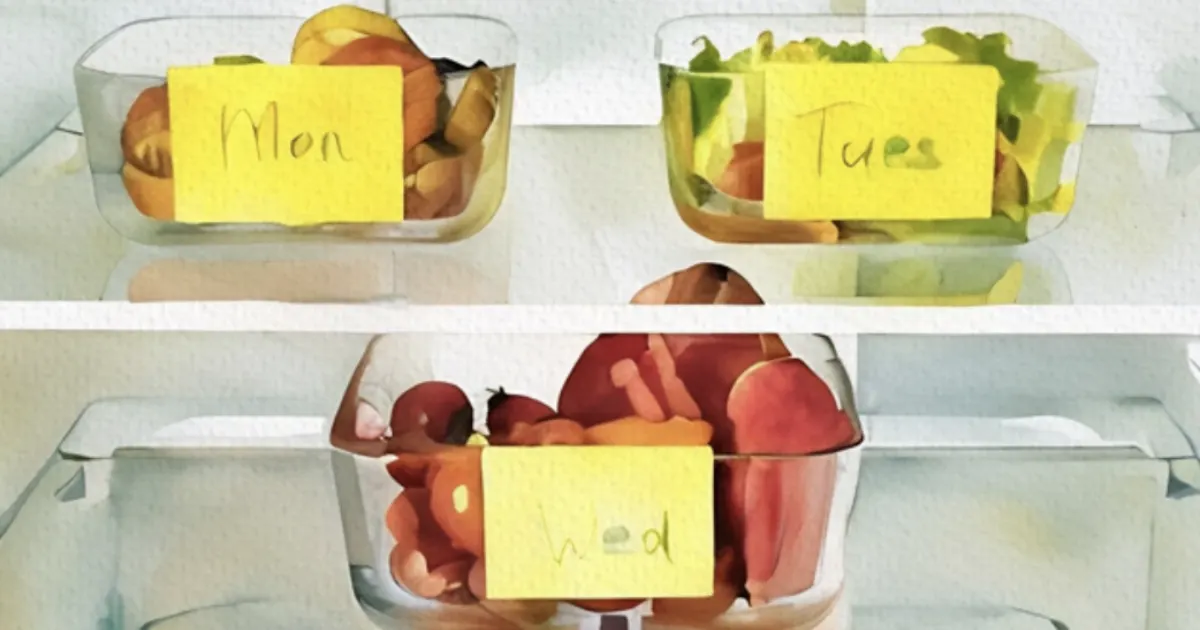

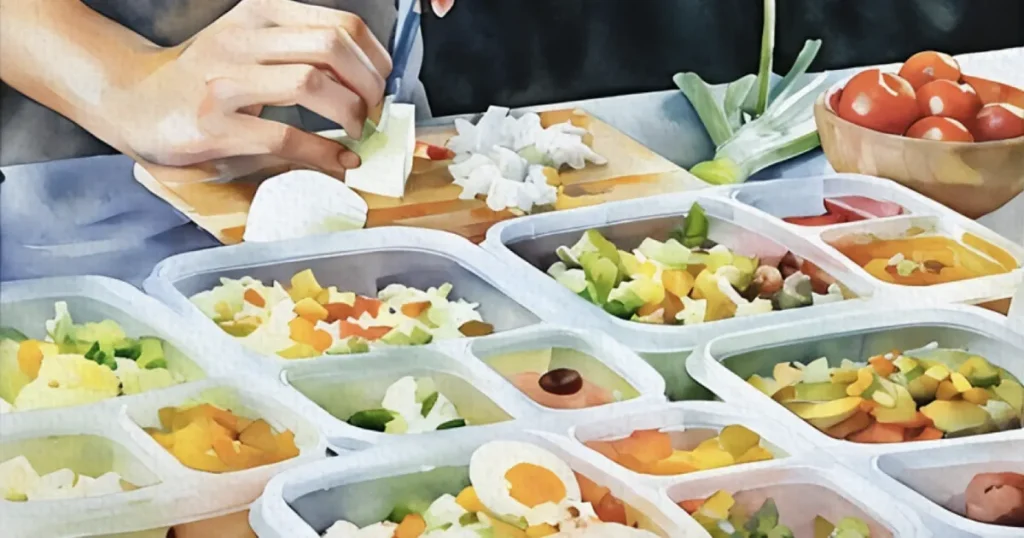


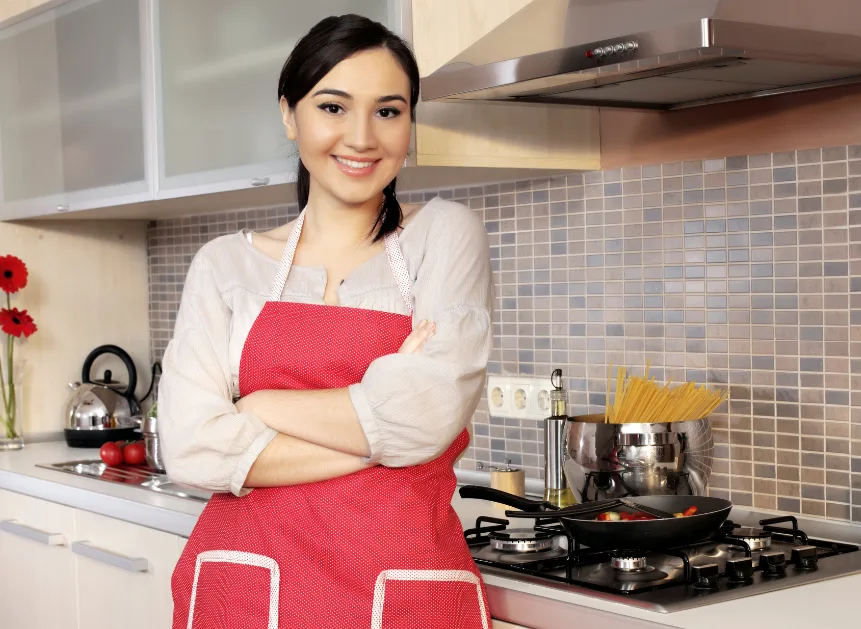

Leave a comment